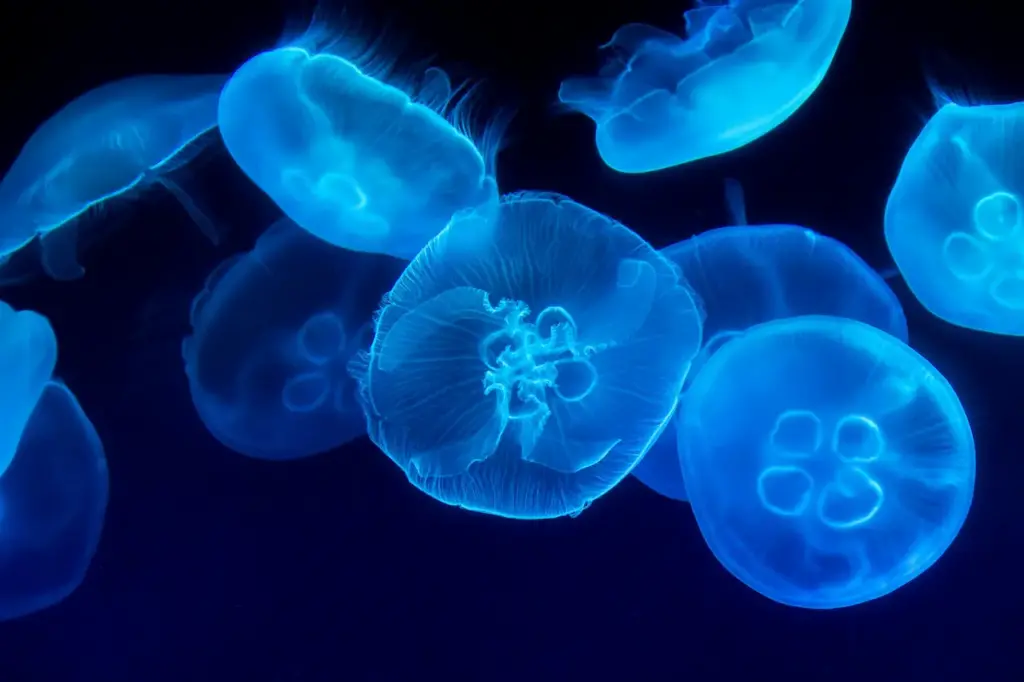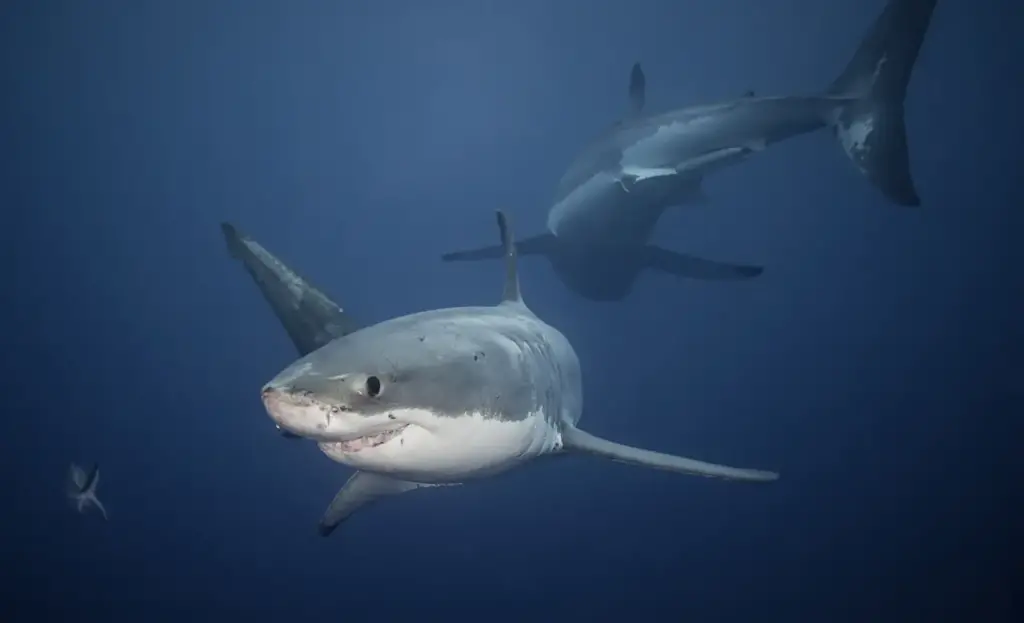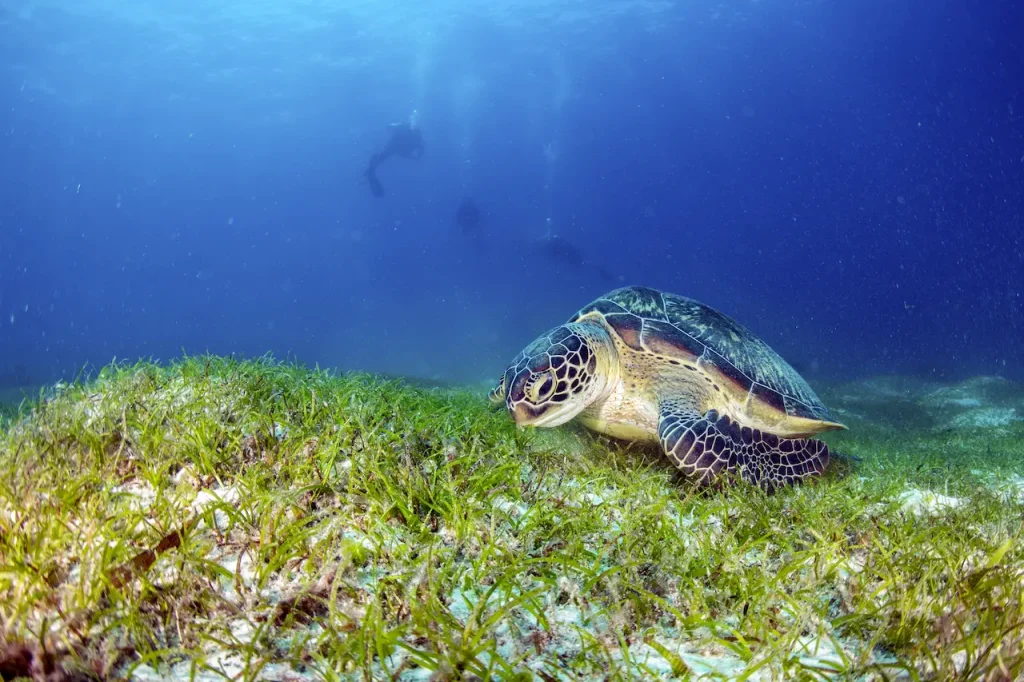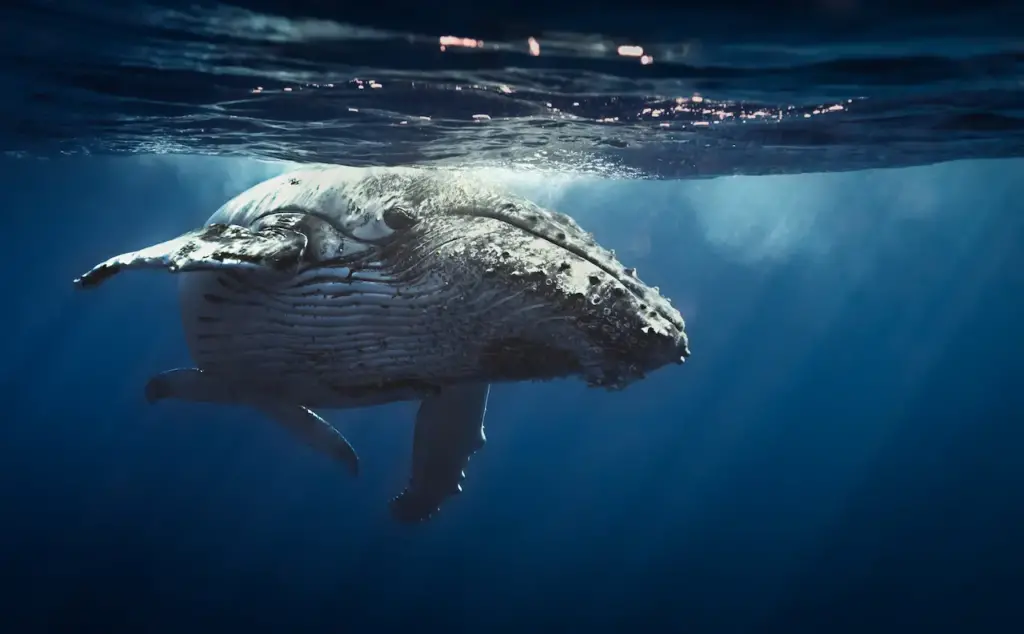What Eats Jellyfish?
Categories
- Accipitridae (1)
- Acrididae (1)
- Algae (2)
- Alligatoridae (1)
- Amoebidae (1)
- Amphibians (3)
- Anatidae (1)
- Anguillidae (1)
- Arachnids (2)
- Bears (2)
- Big Cats (3)
- Birds (13)
- Bovidae (5)
- Bufonidae (1)
- Camelids (1)
- Cameras (1)
- Canines (13)
- Caridea (1)
- Carnivora (10)
- Castoridae (1)
- Cats (5)
- Cebidae (1)
- Cephalopod (1)
- Cervidae (2)
- Cetacean (1)
- Chondrichthyes (1)
- Crocodilia (2)
- Crustaceans (4)
- Culicidae (1)
- Cyaneidae (1)
- Dasypodidae (1)
- Dasyurids (1)
- Deer (1)
- Delphinidae (1)
- Desktop (1)
- Didelphidae (1)
- Dinosaurs (1)
- Dogs (13)
- Dolphins (2)
- Echinoderms (1)
- Education (10)
- Elephantidae (1)
- Equine (1)
- Erethizontidae (1)
- Erinaceidae (1)
- Farming (1)
- Felidae (5)
- Fish (5)
- Food Chain (31)
- Food Web (2)
- Formicidae (1)
- Frugivore (1)
- Gaming (1)
- Gastropods (1)
- Giraffids (1)
- Great Apes (2)
- Health Conditions (3)
- Herbivore (4)
- Hi-Fi (1)
- Hippopotamidae (1)
- Hominidae (1)
- Insects (11)
- Invertebrates (2)
- Keyboards (1)
- Laptops (1)
- Leporidae (1)
- Mammals (23)
- Marsupials (4)
- Mephitidae (1)
- Microchiroptera (1)
- Mollusks (2)
- Mongoose (1)
- Muridae (1)
- Nocturnal Animals (1)
- Odobenidae (1)
- Omnivore (2)
- Phasianidae (1)
- Phocidae (1)
- Plankton (1)
- Plants (2)
- Primate (1)
- Ranidae (1)
- Reptiles (7)
- Rhinocerotidae (1)
- Rodents (5)
- Salamandridae (1)
- Scarabaeidae (1)
- Sciuridae (2)
- Sharks (1)
- Shellfish (1)
- Sound (1)
- Spheniscidae (1)
- Suidae (1)
- Superfamily Papilionoidea (1)
- Theraphosidae (1)
- What Eats (5)
There are many kinds, or species, of jellyfish in all the oceans of the earth. The main predator of jellyfish is other jellyfish, usually of a different species.
But jellyfish also have a number of other natural enemies that like to eat them. These predators include sharks, tunas, swordfish and some species of salmon.
Table of Contents
ToggleIntroduction
Several animals eat jellyfish, even though they contain no proteins, lipids, or carbs. Researchers believe that the fatty acids found in jellyfish tissues, which are essential for sustaining growth and reproductive processes, are advantageous to animals that consume jellyfish. Jellyfish are invertebrate cnidarians that live in both fresh and saltwater. Because they lack gills and a backbone, “jellies” are not considered fish.
On the other hand, jellyfish use their thin skin to absorb oxygen. Then, vein-like cavities that emerge from their digestive tract carry this oxygen throughout their bodies. But jellyfish face threats to certain other sea creatures. In this article, we will discuss several animals that eat jellyfish to fulfil their body needs.

What Eats Jellyfish
Sharks
Sharks are fierce marine predators that consume a wide variety of surprise foods, including jellyfish. Although sharks are frequently thought of as predators that eat fish, seals, and even other sharks, they are also essential to the management of jellyfish populations.
Sharks may not totally depend on jellyfish for their food. However, some species of sharks eat jellyfish due to their stinging tentacles and gelatinous bodies. Oceanic whitetip sharks and blue sharp actively hunt jellyfish. These sharks have developed extraordinary adaptations that allow them to meet the particular difficulties involved in catching and devouring these slick animals. Sharks help in the management of jellyfish populations by consuming them.

Great White Shark What Eats A Shark
Penguins
Penguins are flightless birds living in Southern Hemisphere. They are extremely adapted for swimming and diving and are members of the Spheniscidae family. These birds use flippers to swim under oceans. With their black and white plumage, these birds have a distinctive appearance. Their wings allow them to move through the water with incredible agility and their bodies are streamlined for effective swimming.
Penguins are expert hunters of the cold oceans but pick up jellyfish with accuracy. Their sleek bodies move with ease as their nimble beaks grab hold of the gelatinous meal. They include these soft-bodied invertebrates into their diet.
Want to read more? Read: What Eats Penguins

What Eats A Penguin Spheniscidae
Ocean sunfish
Some fish species have developed unique adaptations to successfully pursue and eat jellyfish, despite the difficulties presented by their sticky bodies and stinging tentacles. One such example is the ocean sunfish, commonly called the mola because of its unusual look and enormous size. Jellyfish are a common food source for ocean sunfish, which squish and eat the slippery creatures with their strong teeth. Jellyfish are also eaten by other fish species, such as some tuna varieties, triggerfish, and sea bream. jellyfish are a vital source of food for ocean fish, especially in places where there may be a lack of other prey.
Within marine ecosystems, ocean fish’s eating of jellyfish provides a variety of functions. These fish assist in managing jellyfish populations by hunting them down, averting outbreaks that could upset the delicate balance of marine ecosystems and harm other species.
Sea Turtles
Although their diet is varied and mostly consists of marine plants, mollusks, and crustaceans, several species of sea turtles have been observed to eat jellyfish, which highlights the species’ versatility and importance in marine ecosystems. Some kinds of sea turtles, such as the loggerhead and leatherback turtles, frequently eat jellyfish as food. Despite the difficulties presented by the gelatinous bodies and stinging tentacles of jellyfish, these turtles have developed unique adaptations that enable them to feed on jellyfish efficiently.
The largest sea turtle species, the leatherback, is one of the most famous predators of jellyfish. The leatherback’s strong jaws and characteristic leathery shell make it an ideal food source for jellyfish. Backward-pointing spikes lining its throat and digestive tract help in trapping and dissolving jellyfish bodies so the turtle can swallow them whole.
In fact, each year many sea turtles become ill and even die from eating floating plastic bags and other plastic trash that they mistake for jellies. That is one of the reasons why it is important to keep trash out of the world’s oceans.

Green Turtle Eating Seagrass
Swordfish
Swordfish are predominantly carnivorous, however, they have also been observed to consume jellyfish, which highlights their versatility and opportunistic eating habits. swordfish’s unique traits allow them to seek and eat a variety of food, including jellyfish. Swordfish are fierce predators that can swim quickly and stun or impale their victims with their sword-like bills. Swordfish may use their pointed bills to cut through the gelatinous material of jellyfish with their razor-sharp bills.
On the other hand, swordfish have been known to consume entire smaller jellyfish or to target certain sections of larger jellyfish, including the bell or oral arms. Swordfish help in the management of jellyfish populations by feeding on them, averting outbreaks that could harm other species and disturb marine ecosystems.
Whales
Some whale species, including the blue whale and the humpback whale, may feed on these gelatinous animals even if they are very large. These whales use a variety of feeding techniques to get at jellyfish, such as lunging into dense clusters of the creatures with their massive mouths agape or straining smaller jellyfish out of the water with their baleen plates. Although jellyfish can appear like an unusual food source for whales, they are a vital source of nourishment, especially in areas where there may be a shortage of other foods. Whales assist in managing jellyfish populations by scavenging them.
In addition, whales may fuel their lengthy migrations and maintain their large bodies by eating jellyfish, which are high in energy.

Humpback Whale What Eats A Whale
Humans
Although jellyfish are not thought of as conventional human food, people are starting to experiment with using these gelatinous animals in their dishes. Jellies have long been considered a delicacy in various cultures, especially in regions of Asia, where they are highly appreciated for their distinct flavor and texture. Jellyfish meals, which are typically made by a variety of methods like pickling, drying, or marinating, combine a mild flavor and crisp texture, and they are frequently served with matching sauces and seasonings. Concerns regarding sustainability and environmental impact have been raised by the increased interest in jellyfish consumption, though, as overharvesting can upset marine ecosystems and lead to jellyfish population decreases.
Crabs
Crabs eat jellyfish because of their adaptable eating and opportunistic outlook. Although most people associate crabs with scavenging dead or rotting stuff, several species, such as the blue and spider crabs, have been seen consuming jellyfish. They use their strong jaws and keen claws to break the jellyfish’s gelatinous bodies to obtain food from this surprising source. Although crabs can eat jellyfish, they usually don’t depend on them much for food, and they might only eat them when there aren’t many other options.
So, what do jellyfish eat? Most jellyfish prey on tiny sea creatures called plankton but some types attack and ingest smaller jellyfish!
Conclusion
Even though jellyfish are excellent marine predators, other marine creatures frequently prey on them. Numerous animals, including as sea turtles, ocean sunfish, sharks, tuna, swordfish, and penguins, frequently eat it. Even while it had been thought that jellyfish were a minor component of marine ecosystems, new developments in studies have demonstrated that this is untrue. Many species rely on jellyfish as a food source despite it seeming unappealing to predators. This merely serves to highlight how little we still understand about our world and how much more is still out there to find and learn.
